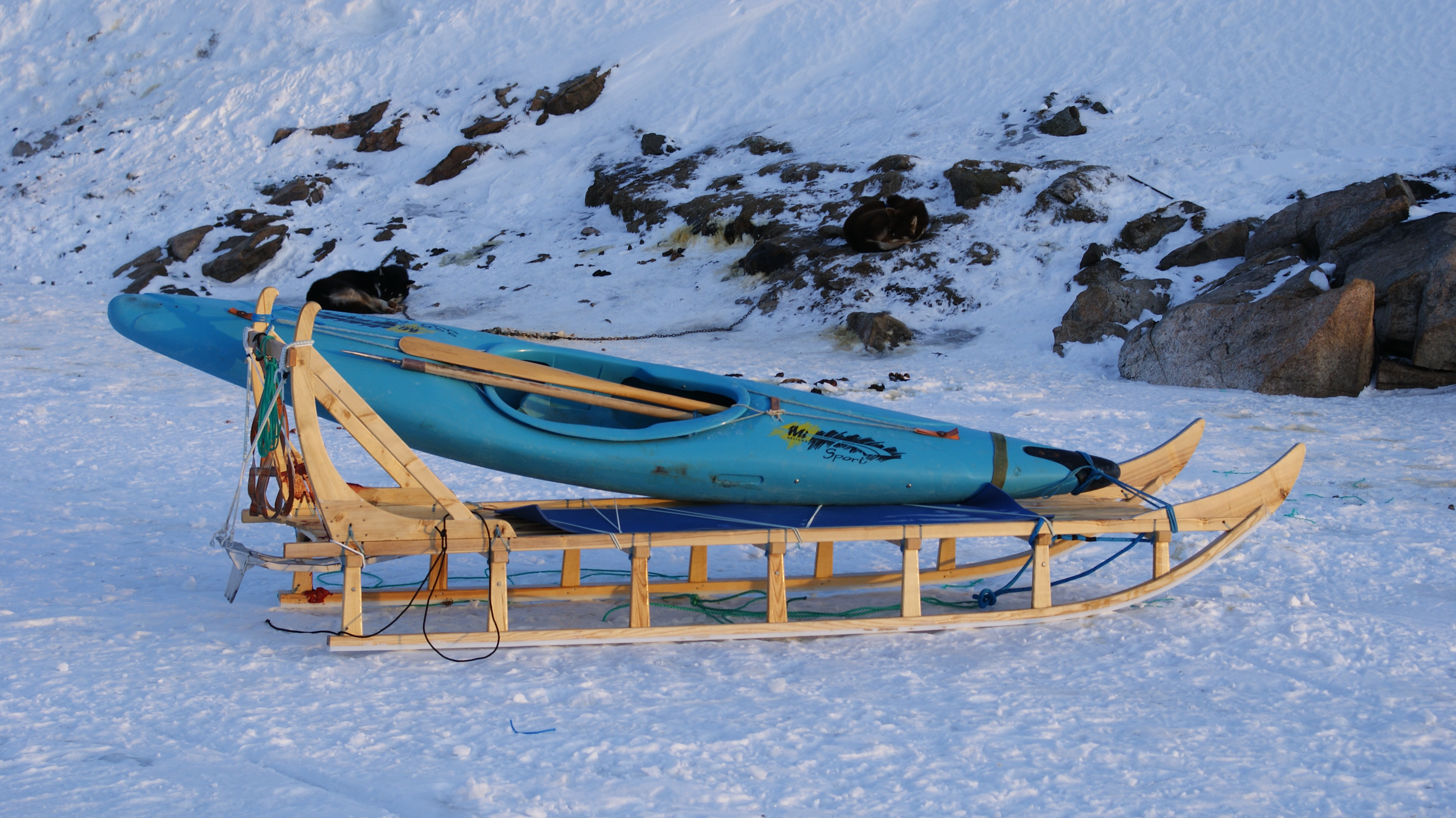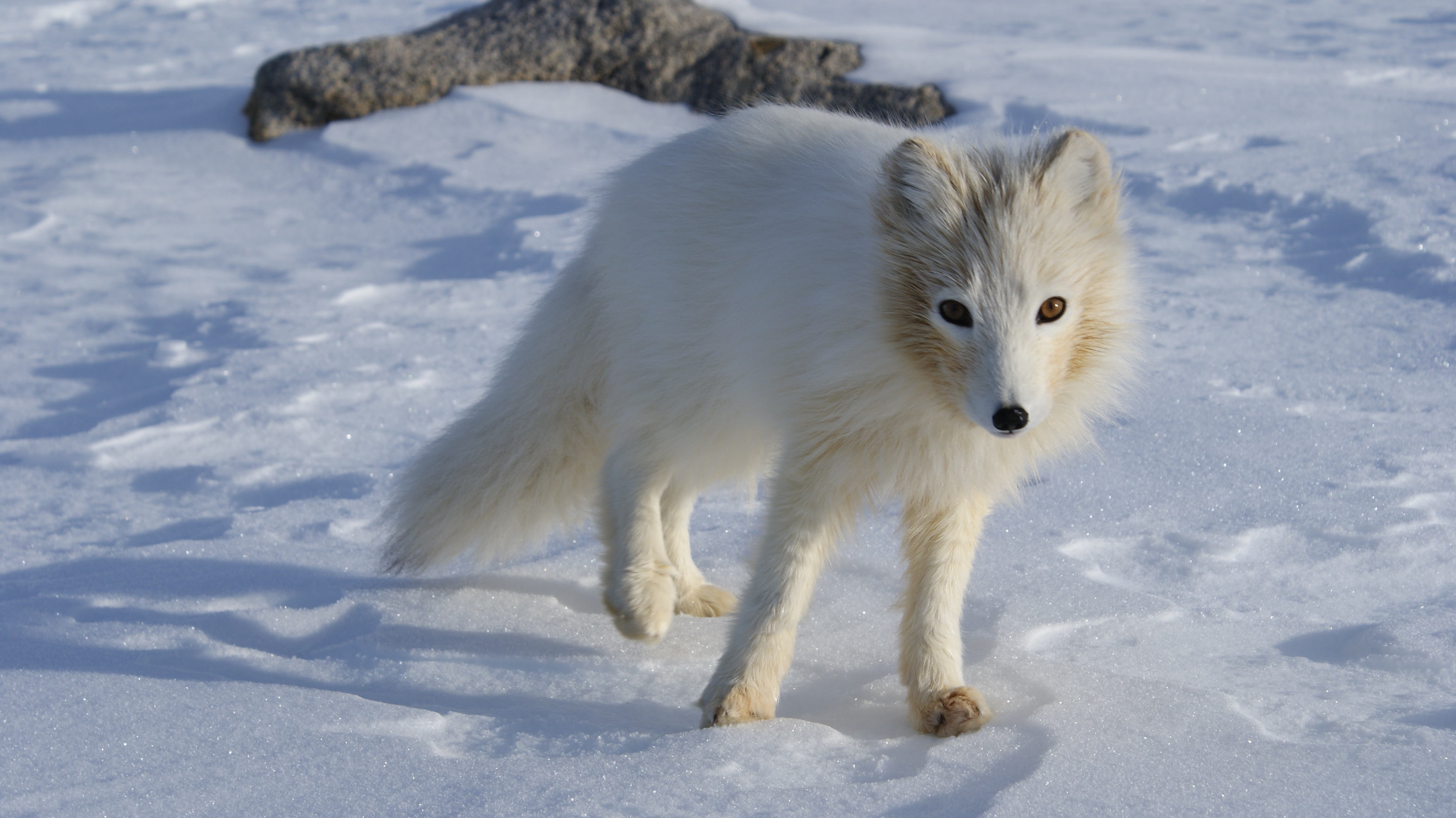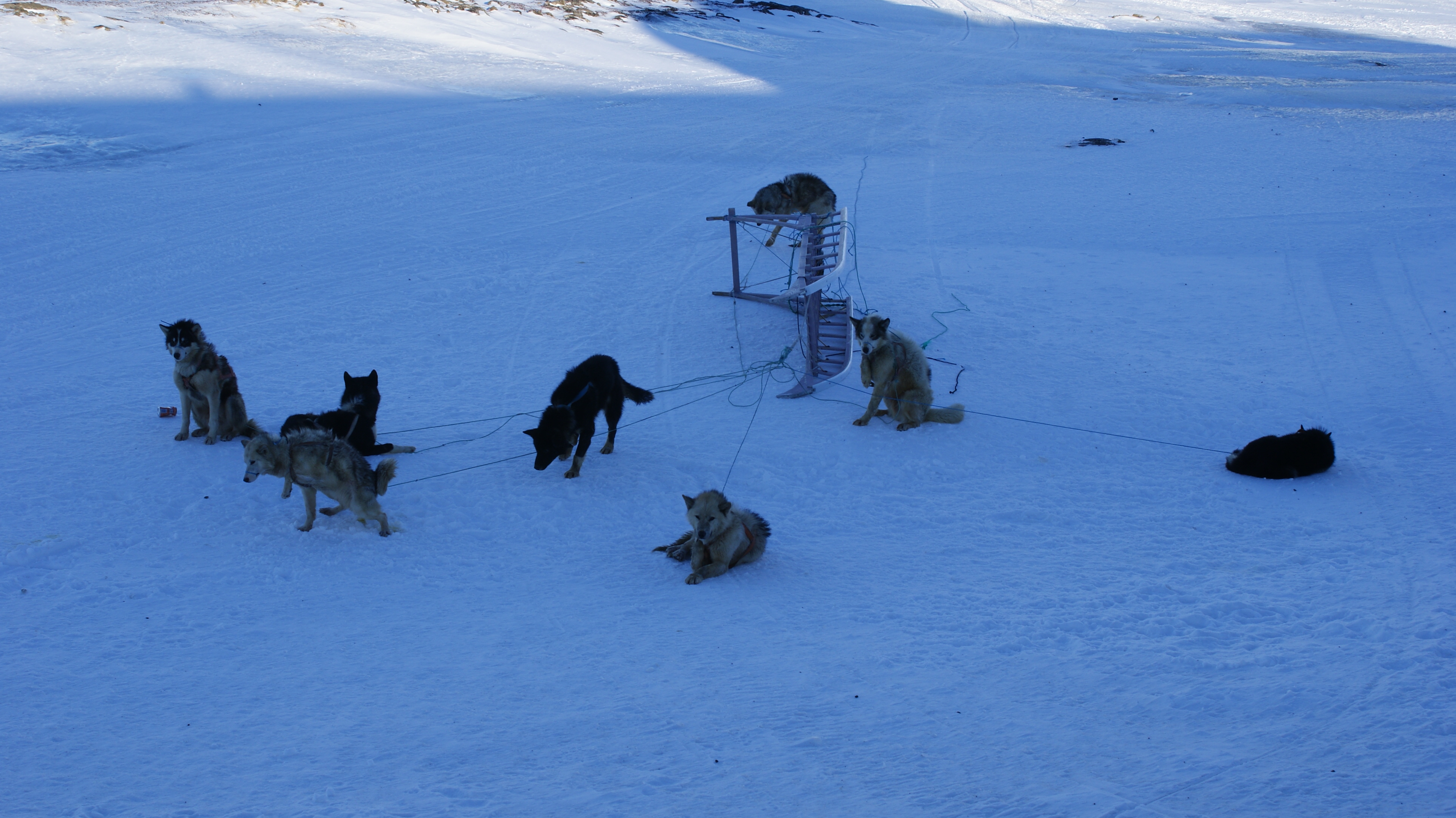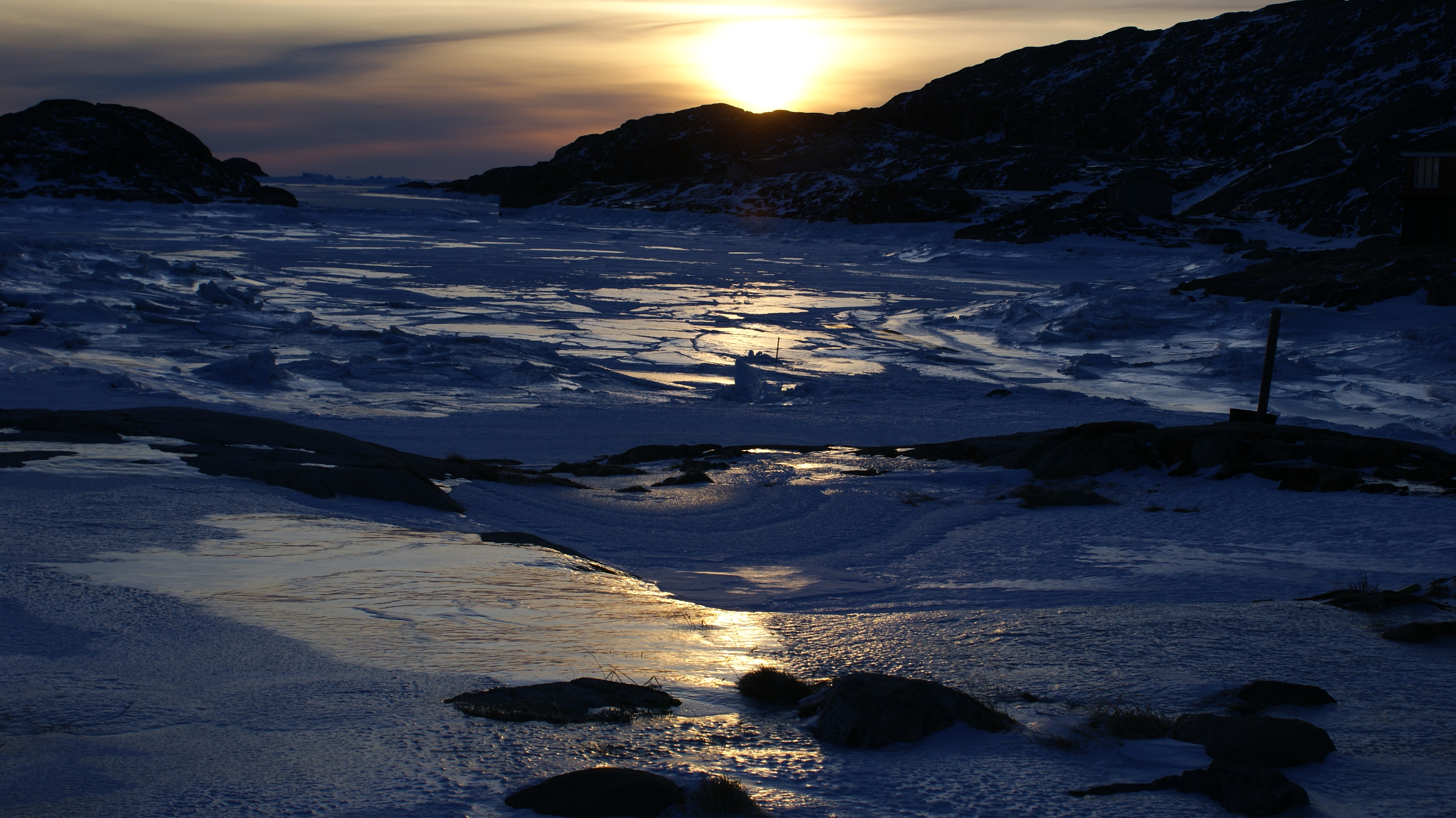Kulusuk on:
[Wikipedia]
[Google]
[Amazon]
Kulusuk (old spelling: ''Qulusuk''),Eastgreenland.com.
Kulusuk
". formerly Kap Dan, is a settlement in the
 The Saqqaq people were the first to reach eastern Greenland, arriving from the northeastgreenland.com
The Saqqaq people were the first to reach eastern Greenland, arriving from the northeastgreenland.com
''History of East Greenland'' through what is now known as Peary Land and Independence Fjord. They were displaced by the Dorset culture around 3,000 years ago. The Thule people passed through the area in the 15th century, finding the southeastern coast uninhabited.
A model of the ship still hangs above the organ of the church, rebuilt and brought into its present state in 1922.
 The village cemetery is located about southeast of the village center, on
The village cemetery is located about southeast of the village center, on

 Medical services are provided by one resident Danish nurse and one resident educated local helper. The school, which was rebuilt in 2005, has about 70 pupils with a high proportion of educated teachers. In 2009 the village received permission from the Sermersooq municipal authorities to convert the old Royal Greenland fish processing plant for school use.
Few families have access to running water. Despite the harsh, icy winter, potable water drawn from the centrally located lake is available all year round through the central pump installation. As in most settlements in Greenland, pipe waterworks are led above the ground due to
Medical services are provided by one resident Danish nurse and one resident educated local helper. The school, which was rebuilt in 2005, has about 70 pupils with a high proportion of educated teachers. In 2009 the village received permission from the Sermersooq municipal authorities to convert the old Royal Greenland fish processing plant for school use.
Few families have access to running water. Despite the harsh, icy winter, potable water drawn from the centrally located lake is available all year round through the central pump installation. As in most settlements in Greenland, pipe waterworks are led above the ground due to
 Unemployment is high and many of the villagers depend upon tourism to supplement the more traditional pursuits of hunting and fishing. The village is served by Hotel Kulusuk which was erected in 1999 and provides a base for tourists and hikers. Day trips organized by the hotel and
Unemployment is high and many of the villagers depend upon tourism to supplement the more traditional pursuits of hunting and fishing. The village is served by Hotel Kulusuk which was erected in 1999 and provides a base for tourists and hikers. Day trips organized by the hotel and

 The village is served by Kulusuk Airport, one of two international airports in eastern Greenland. It provides direct connections to Nuuk on the western coast,
The village is served by Kulusuk Airport, one of two international airports in eastern Greenland. It provides direct connections to Nuuk on the western coast,
 As an outlying island in the small
As an outlying island in the small  Pack ice and small
Pack ice and small
Kulusuk
". formerly Kap Dan, is a settlement in the
Sermersooq
Sermersooq () is a municipality in Greenland, formed on 1 January 2009 from five previous, smaller municipalities. Its administrative seat is the city of Nuuk (formerly called Godthåb), the capital of Greenland, and it is the most populous ...
municipality
A municipality is usually a single administrative division having municipal corporation, corporate status and powers of self-government or jurisdiction as granted by national and regional laws to which it is subordinate.
The term ''municipality' ...
in southeastern Greenland
Greenland is an autonomous territory in the Danish Realm, Kingdom of Denmark. It is by far the largest geographically of three constituent parts of the kingdom; the other two are metropolitan Denmark and the Faroe Islands. Citizens of Greenlan ...
, located on an island of the same name. The settlement has a population of 241, including many Danes
Danes (, ), or Danish people, are an ethnic group and nationality native to Denmark and a modern nation identified with the country of Denmark. This connection may be ancestral, legal, historical, or cultural.
History
Early history
Denmark ...
choosing to live there due to the airport. In the Kalaallisut language, the name of the village means "Chest of a Black Guillemot".
Geography
The urbanized area of the settlement is centered around the harbour in the northwestern part of the island, on the shores of the Torsuut Tunoq sound. Industrial utility buildings are also scattered in the vicinity of the airport, to the northwest of the runway.Kulusuk Island
The island measures from north to south and from west to east. It is hilly throughout, with several distinct mountains dominating the eastern and southern coast. The southernmost point is Cape Naujaangivit, formerly Cape Dan (, a name previously extended to the settlement and island) under the Isikajia mountain.Qalorujoorneq
The highest point on the island is the summit of Qalorujoorneq, at topping a wide mountain massif in the southeast, directly above the airport.History
From prehistory until 15th century
 The Saqqaq people were the first to reach eastern Greenland, arriving from the northeastgreenland.com
The Saqqaq people were the first to reach eastern Greenland, arriving from the northeastgreenland.com''History of East Greenland'' through what is now known as Peary Land and Independence Fjord. They were displaced by the Dorset culture around 3,000 years ago. The Thule people passed through the area in the 15th century, finding the southeastern coast uninhabited.
18th and 19th centuries
Due to back-migrations to the more densely populated western coast, the southeastern coast was deserted for another two hundred years. The region was not settled until the late 18th century, with the current town of Tasiilaq then known as ''Ammassalik'' surviving as the only permanent settlement in the 19th century. Population increased however from the 1880s, dispersing over several villages in the area.20th century
The small Kulusuk Island was not permanently settled until the early 1900s, with the village founded only in 1909, celebrating its 100th anniversary in 2009. The church in the village was constructed in 1908 by the crew of a Danish sailing vessel that ran aground on the nearby coast and constructed from the timbers of the ship itself.greennet.glA model of the ship still hangs above the organ of the church, rebuilt and brought into its present state in 1922.

 The village cemetery is located about southeast of the village center, on
The village cemetery is located about southeast of the village center, on permafrost
Permafrost () is soil or underwater sediment which continuously remains below for two years or more; the oldest permafrost has been continuously frozen for around 700,000 years. Whilst the shallowest permafrost has a vertical extent of below ...
ground, straddling the southern and northern slopes of a small hill. No names appear on the crosses in honour of the Inuit tradition that the name of the deceased is passed on to another at death and lives on to the next generation.
In the 1930s, the population reached 165 inhabitants, the village surpassing the older Tasiilaq as the largest settlement in the region. As of 2013, Kulusuk is the third-largest settlement in the region, after Tasiilaq and Kuummiit, and the fourth-largest on the eastern coast, although the number of villagers dipped below 300 in the late 2000s.
Language
Due to its relative and longstanding isolation, the dialect of Greenlandic spoken in Kulusuk, ''Tunumiit oraasiat'', differs from that of its relatives of the western coast. Amongst Greenlandic dialects, it is considered the most innovative.Facilities

 Medical services are provided by one resident Danish nurse and one resident educated local helper. The school, which was rebuilt in 2005, has about 70 pupils with a high proportion of educated teachers. In 2009 the village received permission from the Sermersooq municipal authorities to convert the old Royal Greenland fish processing plant for school use.
Few families have access to running water. Despite the harsh, icy winter, potable water drawn from the centrally located lake is available all year round through the central pump installation. As in most settlements in Greenland, pipe waterworks are led above the ground due to
Medical services are provided by one resident Danish nurse and one resident educated local helper. The school, which was rebuilt in 2005, has about 70 pupils with a high proportion of educated teachers. In 2009 the village received permission from the Sermersooq municipal authorities to convert the old Royal Greenland fish processing plant for school use.
Few families have access to running water. Despite the harsh, icy winter, potable water drawn from the centrally located lake is available all year round through the central pump installation. As in most settlements in Greenland, pipe waterworks are led above the ground due to permafrost
Permafrost () is soil or underwater sediment which continuously remains below for two years or more; the oldest permafrost has been continuously frozen for around 700,000 years. Whilst the shallowest permafrost has a vertical extent of below ...
.
The village is served by the communal all-purpose Pilersuisoq store with an integrated a post office of Post Greenland.
The village has a small Lutheran church, which includes elegant stained glass windows donated by a German glassworks owner.
Tourism
 Unemployment is high and many of the villagers depend upon tourism to supplement the more traditional pursuits of hunting and fishing. The village is served by Hotel Kulusuk which was erected in 1999 and provides a base for tourists and hikers. Day trips organized by the hotel and
Unemployment is high and many of the villagers depend upon tourism to supplement the more traditional pursuits of hunting and fishing. The village is served by Hotel Kulusuk which was erected in 1999 and provides a base for tourists and hikers. Day trips organized by the hotel and Icelandair
Icelandair is the flag carrier of Iceland.
Linked from here It is part of the Icelandair Group and operates to destinations on both sides of the Atlantic Ocean from its main airline hub, hub at Keflavík International Airport. Its smaller dom ...
focus on the traditional culture of eastern Greenland, including drum dance performances and dogsledding.
In summer, activities as glacier walks, ice climbing
Ice climbing is a climbing discipline that involves ascending routes consisting entirely of frozen water. To ascend, the ice climber uses specialist equipment, particularly double ice axes (or the more modern ice tools) and rigid crampons. ...
and visiting ice caves
An ice cave is any type of natural cave (most commonly lava tubes or limestone caves) that contains significant amounts of perennial (year-round) ice. At least a portion of the cave must have a temperature below 0 °C (32 °F) all ye ...
can be done with the help of local adventure companies.
In winter it is possible to cross the frozen sounds, making Kulusuk no less attractive for mountaineers, climbers, and polar adventurers than the neighboring Tasiilaq. The mountains on Apusiaajik Island dominating the Kulusuk panorama culminate in several summits, whilst the front of the active Apusiaajik glacier
A glacier (; or ) is a persistent body of dense ice, a form of rock, that is constantly moving downhill under its own weight. A glacier forms where the accumulation of snow exceeds its ablation over many years, often centuries. It acquires ...
can be reached on foot or by snowmobile.
Polar cruises bound for, or returning from the coastal voyages in the Kangertittivaq fjord and the shores of Northeast Greenland National Park often visit the area on their way from/to Tasiilaq, albeit without anchoring in the harbour due to the shallowness of the coastal waters.
Population
The population of Kulusuk has decreased by 23% relative to the 1990 levels, and by over 19% relative to the 2000 levels.Transport

 The village is served by Kulusuk Airport, one of two international airports in eastern Greenland. It provides direct connections to Nuuk on the western coast,
The village is served by Kulusuk Airport, one of two international airports in eastern Greenland. It provides direct connections to Nuuk on the western coast, Reykjavík
Reykjavík is the Capital city, capital and largest city in Iceland. It is located in southwestern Iceland on the southern shore of Faxaflói, the Faxaflói Bay. With a latitude of 64°08′ N, the city is List of northernmost items, the worl ...
in Iceland
Iceland is a Nordic countries, Nordic island country between the Atlantic Ocean, North Atlantic and Arctic Oceans, on the Mid-Atlantic Ridge between North America and Europe. It is culturally and politically linked with Europe and is the regi ...
, and Tasiilaq on Ammassalik Island, which links many other villages in the region through settlement helicopter flights.
In the summer, the cargo boats of Royal Arctic Line connect Kulusuk and Tasiilaq, providing an ''ad hoc'' alternative for the helicopter flights of Air Greenland.
In the winter, the inhabitants of the village use snowmobiles and traditional dogsleds as additional means of transport – families arriving at the airport are ferried to the settlement on both. Dogsleds are then left briefly untended, albeit accidental escapes amongst the dogs are rendered impossible through overturning the sled, and binding of the front paws of the dog pack leaders.
Climate
 As an outlying island in the small
As an outlying island in the small archipelago
An archipelago ( ), sometimes called an island group or island chain, is a chain, cluster, or collection of islands. An archipelago may be in an ocean, a sea, or a smaller body of water. Example archipelagos include the Aegean Islands (the o ...
of islands in the Ammassalik region, Kulusuk Island is the most exposed to the persistent northeasterly winds from the Greenland Sea. Although the average winter temperatures are higher than in the more northerly settlements on the west coast of Greenland – often in single digits below zero – the ferocity of winds brings the effective temperatures down by more than an order of magnitude. During a quarter or more January days the island experiences wind speeds between 8 and 10 on the Beaufort scale
The Beaufort scale ( ) is an empirical measure that relates wind speed to observed conditions at sea or on land. Its full name is the Beaufort wind force scale. It was devised in 1805 by Francis Beaufort a hydrographer in the Royal Navy. It ...
, qualifying as fresh gales, strong gales, or storms.
Wind speeds exceeding occur throughout the year, often causing flight cancellations at the Kulusuk Airport. Neighboring Tasiilaq – where the main local weather station is located – holds the settlement windspeed record for Greenland: on 7 February 1970 the speed peaked at or
 Pack ice and small
Pack ice and small iceberg
An iceberg is a piece of fresh water ice more than long that has broken off a glacier or an ice shelf and is floating freely in open water. Smaller chunks of floating glacially derived ice are called "growlers" or "bergy bits". Much of an i ...
s pushed forth by the East Greenland Current ram against the northeastern coast, blocking the Ikaasaartik Sound and facilitating the freeze of the wider Torsuut Tunoq waterway.
Conversely, when the Greenland High pressure area from the Greenland ice sheet
The Greenland ice sheet is an ice sheet which forms the second largest body of ice in the world. It is an average of thick and over thick at its maximum. It is almost long in a north–south direction, with a maximum width of at a latitude ...
() moves towards the area in winter, Kulusuk can be as wind-free and sunny as the inner parts of the Uummannaq Fjord region known as the sunniest spot in Greenland.
Kulusuk experiences one of the windiest winters, with rougher weather than the rest of Greenland. A particular feature of the local climate is the instantly freezing rain, covering the northeast-facing surfaces with layers of rime ice. There is little snow in winter, with the island remaining icebound for several months, the ice forms varying from solid firn, through glazed surfaces, to rime ice.
Even though Kulusuk lies approximately south of the Arctic Circle
The Arctic Circle is one of the two polar circles, and the northernmost of the five major circle of latitude, circles of latitude as shown on maps of Earth at about 66° 34' N. Its southern counterpart is the Antarctic Circle.
The Arctic Circl ...
, the celestial phenomenon of Aurora borealis
An aurora ( aurorae or auroras),
also commonly known as the northern lights (aurora borealis) or southern lights (aurora australis), is a natural light display in Earth's sky, predominantly observed in high-latitude regions (around the Arc ...
can still be observed in the village.
References
External links
{{Authority control Populated places in Greenland Sermersooq